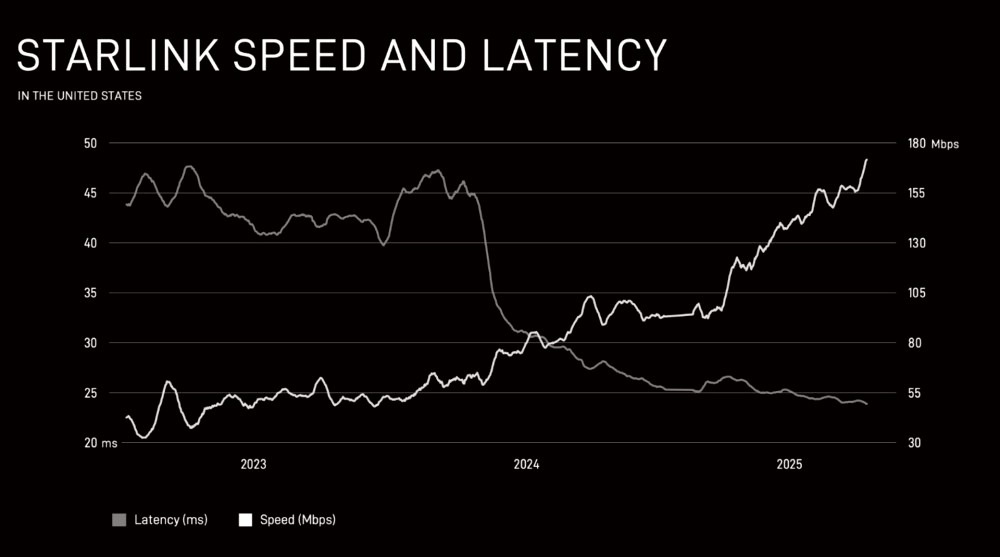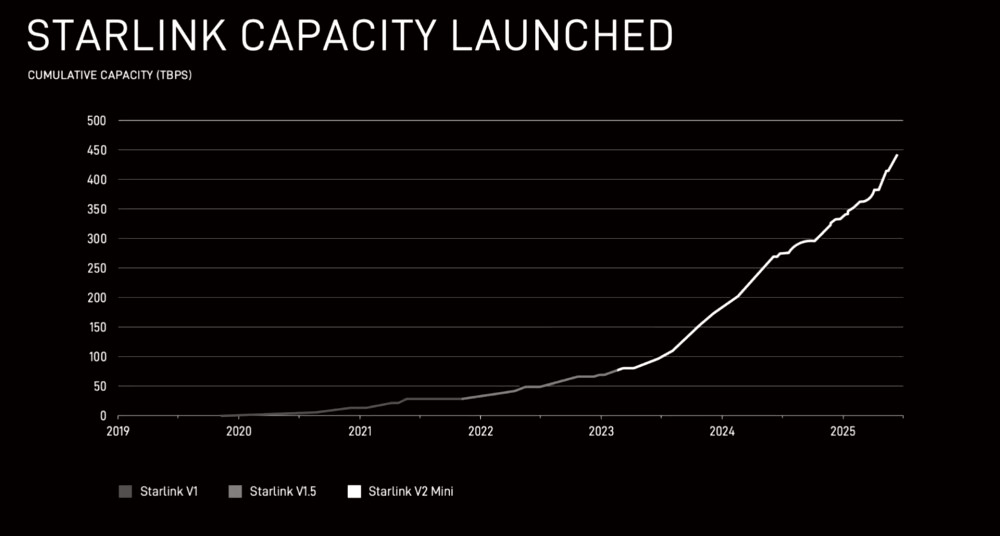SpaceX has announced its plans to launch the third generation of Starlink satellites starting in 2026. Each satellite will provide over 1 Tbps download speed and 200 Gbps upload speed.
The new satellites will be equipped with advanced computers, modems, and beamforming systems, functioning at lower orbits to reduce latency. A single launch of third-generation satellites on the Starship could add up to 60 Tbps of bandwidth—20 times more than current Falcon 9 missions.
Currently, the total bandwidth of all active Starlink satellites reaches approximately 450 Tbps. Over the past year, Starlink has added more than 2,300 satellites, expanded coverage to 42 new countries and territories, and increased its user base to over 6 million.
In the United States, the average download speed during peak hours is 200 Mbps with latency at 25.7 ms. Less than 1% of measurements exceed 55 ms. Starlink also boasts the largest ground infrastructure for satellite communications globally, with over 1,500 antennas deployed across more than 100 sites in the U.S.
The network continues to demonstrate high resilience, remaining operational during widespread power outages in Spain and Portugal, and supporting rescue operations following floods and wildfires in the U.S. and Canada. Certain satellites are equipped with laser communication links for direct data transmission between units without ground infrastructure involvement.
By the end of 2025, Starlink plans to launch over 400 satellites into polar orbits to enhance coverage in Alaska and other high-latitude regions.


